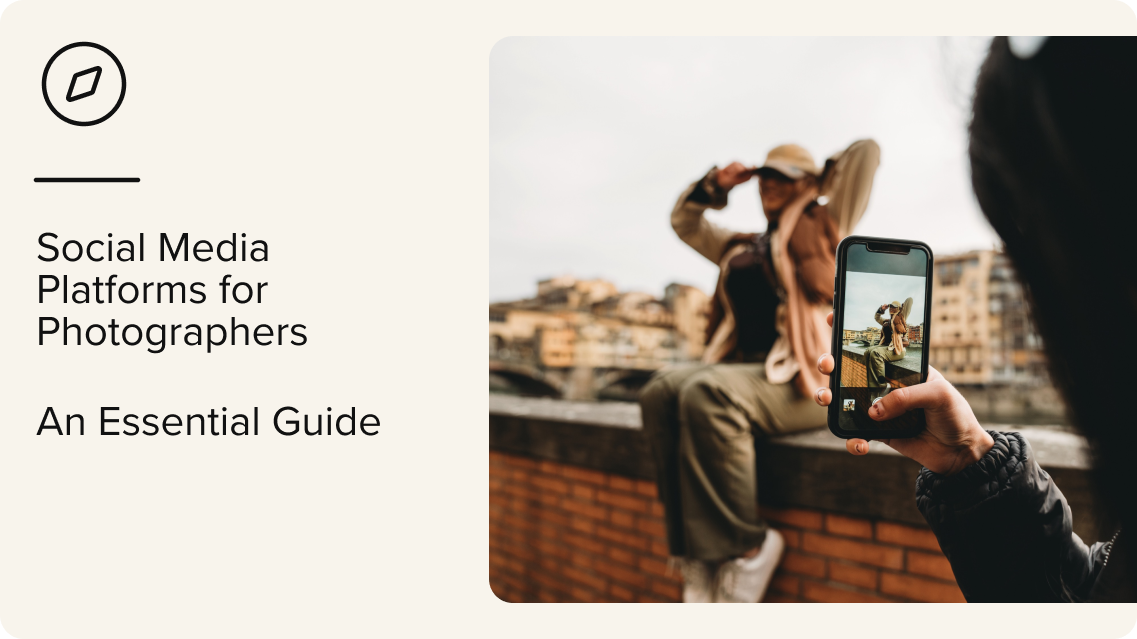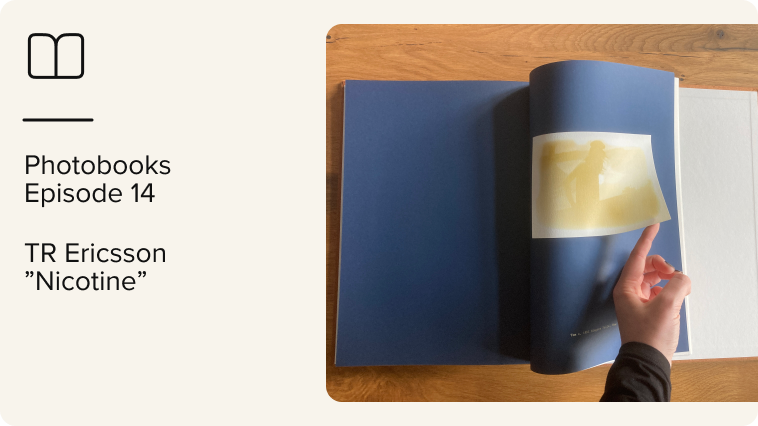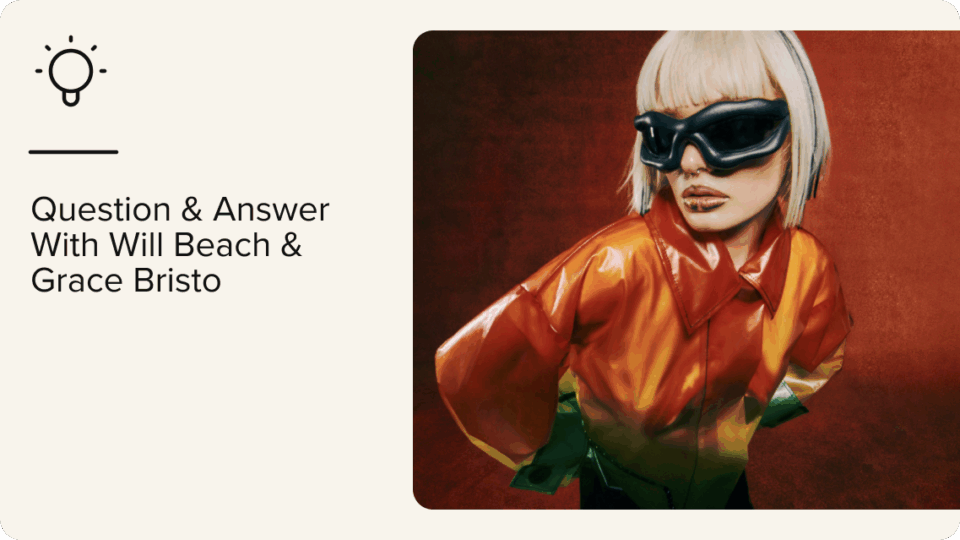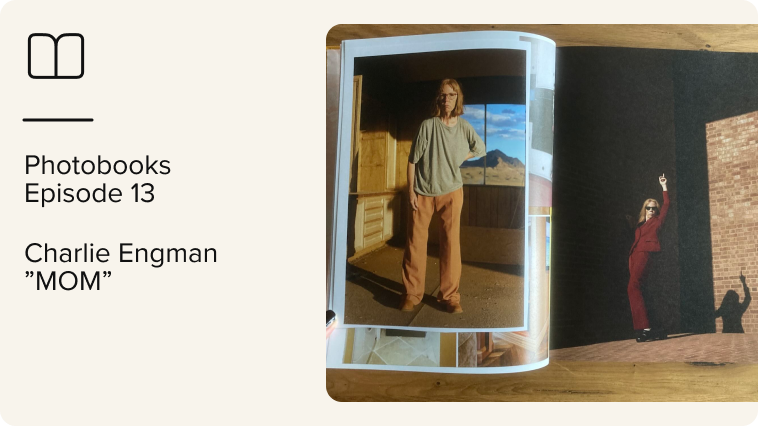
In today’s photography landscape, social media for photographers is no longer optional but vital for attracting consistent clients and building a professional brand. By showcasing your photo work on platforms like Instagram, Pinterest, Flickr, and VSCO, you can expand your reach, strengthen your reputation, and connect with potential clients and peers.
This article dives into the best social media platforms for photographers, highlighting how each social channel can be leveraged to grow your audience and connect with peers. We also cover photography social media best practices, providing insights and strategies to help photographers maximize their presence and impact across different platforms.
Key Takeaways of Social Media Platforms and Strategies for Photographers
- Social media is essential for photographers to showcase work, attract clients, and grow their personal brand.
- Top platforms include Instagram, Pinterest, Flickr, VSCO, TikTok, Behance, 500px, and LinkedIn, each serving different photography goals.
- Choosing the best social media platform for photographers depends on your niche, target audience, and whether your focus is branding, networking, or monetization.
- Following photography social media best practices, such as consistent posting, engaging with your community, using hashtags strategically, and storytelling, helps maximize results.
- Focusing on a few key platforms ensures stronger presence, higher-quality content, and better audience engagement.
Why Photographers Should Leverage Social Media for Growth and Exposure
For photographers, social media opens doors to showcasing work, attracting clients, and growing a professional brand. It provides a digital stage where your photography can reach a global audience, while also connecting you with peers, mentors, and potential collaborators.
Here are the top benefits of social media platforms for photographers and photo service providers.
1. Build a Photography Social Media Portfolio
Social media provides a global stage to display your photography, allowing you to reach a vast audience without the geographical limitations of traditional galleries or exhibitions. It’s a digital portfolio that’s accessible 24/7, offering continuous exposure to your work.
2. Expand Your Network and Photography Community
Photographers can connect with peers, mentors, and enthusiasts, fostering a sense of community. These connections can lead to collaborations, learning opportunities, and support that can be invaluable in a photographer’s journey.
3. Market Your Photography Services
Social media serves as a marketing tool, helping photographers attract and engage with potential clients. By showcasing your style and expertise, you can appeal to individuals and businesses looking for photography services.
4. Build Your Photography Brand Online
It allows photographers to build and manage their personal or business brands. Through consistent posting and engagement, you can establish a recognizable style and voice, differentiating yourself in a crowded market.
The Best Social Media Platforms for Photographers
Instagram for Photographers: Best for Creating Visual Portfolios and Audience Engagement

Instagram is ideal for showcasing your photography work through reels, carousels, and stories, while connecting with a large, active audience.
Advantages
- Visual Focus: Designed for visual content, Instagram is ideal for photographers to share their work.
- Large Audience: With billions of active users, the potential reach is massive.
- Engagement Tools: Features like stories, live videos, and IGTV allow for creative storytelling and engagement.
Disadvantages
- Algorithm Changes: Frequent changes can affect visibility and engagement.
- High Competition: Standing out in a saturated market can be challenging.
Behance for Photographers: Best for Building Professional Portfolios and Creative Networking

Behance is best used to market your photography business and connect with serious clients and collaborators.
Advantages
- Professional Network: Behance is tailored for creative professionals, making it a great place to find serious clients and collaborators.
- Portfolio Showcase: Offers a more structured portfolio presentation compared to other social platforms.
- Adobe Integration: Seamless integration with Adobe Creative Cloud.
Disadvantages
- Niche Audience: While focused, the audience is smaller than more general platforms.
- Limited Social Features: Less emphasis on social networking compared to platforms like Instagram.
Learn more: How to build a photography portfolio that stands out.
Pinterest for Photographers: Best for Long-Term Portfolio Visibility and Traffic Generation

Pinterest is a perfect social media platform for sharing photography projects that inspire others and drive traffic to your website or blog.
Advantages
- Idea Discovery: A go-to platform for inspiration, making it a great place to get your work seen by those looking for creative ideas.
- Longevity of Content: Pins can remain relevant and discoverable for months or even years.
- Traffic Driving: Can be a significant source of traffic to your website or blog.
Disadvantages
- Indirect Engagement: Less direct interaction with followers compared to other platforms.
- Requires Strategy: Effective use requires a good understanding of SEO and content strategy.
Flickr for Photographers: Best for Photo Monetization

Flickr is popular among photographers who want to share high-quality images and connect with a community that values professional photography, while also offering licensing options for your work.
Advantages
- Photography Community: A platform with a strong focus on photography and a community that appreciates quality work.
- High-Quality Images: Supports high-resolution images and maintains quality better than some other platforms.
- Licensing Options: Allows photographers to specify usage rights.
Disadvantages
- Declining Popularity: Has lost some of its user base to other platforms over the years.
- Limited Reach: Not as effective for reaching potential clients compared to more mainstream social media.
500px for Photographers: Best for Quality-Focused Exposure and Photo Sales
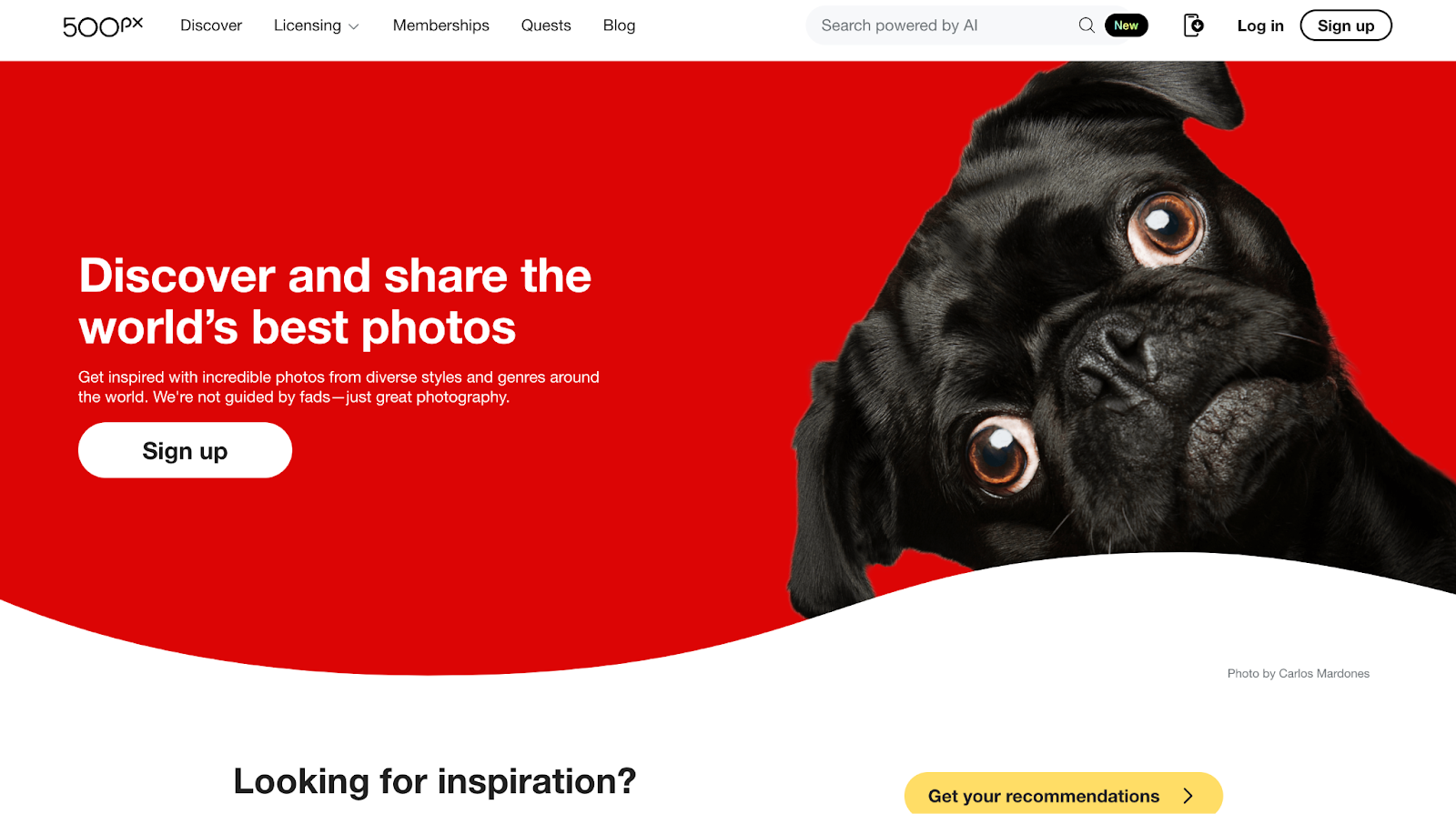
500px offers a global community for showcasing high-quality photography and opportunities to monetize your images.
Advantages
- Quality Focused: Known for high-quality photography, making it a great place to find inspiration and be inspired.
- Global Community: Connects photographers from around the world, offering exposure to diverse styles and techniques.
- Licensing Opportunities: Provides a marketplace for selling photos.
Disadvantages
- Competitive: High standards mean it can be tough for beginners to get noticed.
- Limited Non-Photographic Content: Less suitable for those looking to integrate other types of content with their photography.
VSCO for Photographers: Best for Creative Presentation and Client Connection
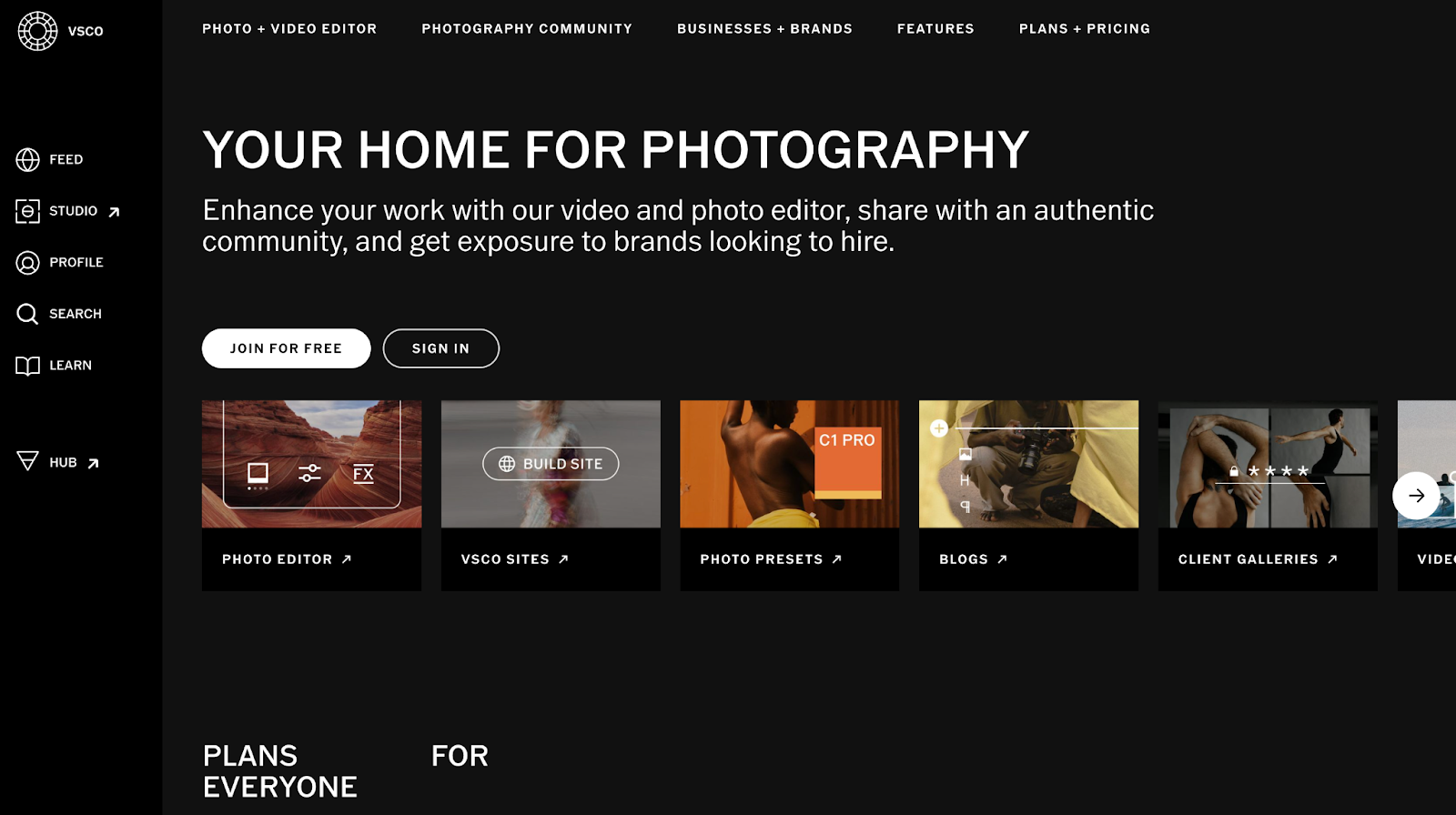
VSCO allows photographers to present their work creatively while reaching an engaged audience and potential clients.
Advantages
- High Engagement: One of the fastest-growing platforms with a highly engaged user base.
- Creative Expression: Offers unique ways to present photography through video content.
- Viral Potential: High potential for content to go viral and reach a large audience quickly.
Disadvantages
- Lesser Known: Smaller user base compared to giants like Instagram.
- Limited Discovery Features: Harder to get noticed by people not already following you.
TikTok for Photographers: Best for Brand Awareness and Viral Reach

TikTok is great for marketing your photography services and growing brand visibility through short-form video content.
Advantages
- High Engagement: One of the fastest-growing platforms with a highly engaged user base.
- Creative Expression: Offers unique ways to present photography through video content.
- Viral Potential: High potential for content to go viral and reach a large audience quickly.
Disadvantages
- Video Focused: Primarily designed for video content, which may not suit all photographers.
- Fast-Paced: Content can quickly become lost in the fast-moving feed.
LinkedIn for Photographers: Best for Professional Networking and Career Opportunities

LinkedIn helps photographers build credibility, connect with industry professionals, and access job or freelance opportunities.
Advantages
- Professional Networking Hub: LinkedIn serves as a global networking platform, making it ideal for photographers to connect with industry professionals, potential clients, and collaborators.
- Credibility and Visibility: Allows photographers to build a professional profile showcasing their experience, skills, and portfolio, enhancing their credibility and visibility in the industry.
- Job Opportunities: Offers access to a wide range of job listings and project opportunities tailored for photographers looking to expand their careers or find freelance work.
Disadvantages
- Broad Focus: Unlike niche platforms, LinkedIn’s broad professional focus means photographers must work harder to stand out among professionals from all industries.
- Engagement Challenges: Engaging with content and users can be more formal and less frequent compared to more casual and visually-focused social media platforms, potentially slowing the pace of networking and community building.

How to Choose the Right Social Media Platform for Your Photo Services Business
When deciding which platforms to invest time in, consider your goals, the type of photography you do, and where your target audience is most active. It’s often beneficial to focus on a few platforms and use them effectively rather than spreading yourself too thin.
Choosing the right social media platform is a critical decision for photographers looking to maximize their online presence and engagement. This decision should be strategic, taking into account several key factors that can significantly influence the effectiveness of your social media efforts.
Here’s a deeper dive into the considerations mentioned, providing a more comprehensive guide to making this crucial choice.
Choosing the right social media platform is a critical decision for photographers looking to maximize their online presence and engagement. This decision should be strategic, taking into account several key factors that can significantly influence the effectiveness of your social media efforts. Here’s a deeper dive into the considerations mentioned, providing a more comprehensive guide to making this crucial choice.
1.Define Your Goals (Photography Marketing, Networking, etc.)
Before you start posting your work across various platforms, it’s essential to have clear goals. Are you looking to build a brand, sell your work, attract freelance opportunities, or simply share your passion with a like-minded community? Different platforms cater to different objectives:
- Brand building: Instagram and TikTok are excellent for creating a visually appealing brand identity and reaching a broad audience.
- Selling your work: Etsy, 500px, and Behance can be more effective if your goal is to sell prints or land commercial projects.
- Networking: LinkedIn and Behance are great for professional networking, connecting with other photographers, and finding freelance opportunities.
2. Consider the Type of Photography You Do
The nature of your photography can also influence which platform will best suit your needs. For instance:
- Landscape and Travel Photography: Instagram and 500px offer large, engaged audiences that appreciate stunning visuals of nature and exotic locations.
- Portrait and Wedding Photography: Pinterest is a go-to platform for many looking for inspiration for their weddings, making it a great place for photographers in this niche to get noticed.
- Street Photography: Flickr and Instagram have communities that appreciate the candid, raw emotion captured in street photography.
- Fine Art Photography: Behance and VSCO are platforms where a more niche audience looking for unique, artistic expressions can be found.
3. Identify Where Your Target Audience Is Most Active
Understanding where your target audience spends their time is crucial. For instance, if your target audience is younger, platforms like TikTok and Instagram might be more appropriate. For a more professional audience, LinkedIn could be the key. Conducting market research can help you understand your audience’s demographics and preferences.
- Younger Audiences: Prefer engaging, dynamic content found on TikTok and Instagram.
- Professional Clients: May be more active on LinkedIn or Behance, looking for photographers for commercial projects.
- Art Buyers and Collectors: Often explore niche platforms like VSCO or specialized groups within larger platforms like Facebook.
4. Focus on Fewer Platforms
While it might be tempting to have a presence on every platform, spreading yourself too thin can dilute your efforts and lead to burnout. Focusing on a few platforms allows you to:
- Build a Stronger Presence: By concentrating your efforts, you can engage more deeply with your audience, leading to stronger relationships and loyalty.
- Maintain Quality: It’s easier to ensure the content you post is of the highest quality when you’re not stretched too thin.
- Understand Platform Nuances: Each platform has its unique features and audience behaviors. Focusing on fewer platforms allows you to learn these intricacies and tailor your content accordingly.
Best Practices for Using Social Media as a Photographer
Here are a few tips to help you stand out as a photographer on social media channels.
- Consistency is key: regular posting keeps your audience engaged and helps with visibility.
- Engage with your community: respond to comments, participate in discussions, and support other photographers.
- Use hashtags wisely: they can increase the discoverability of your content, especially on platforms like Instagram.
- Quality over quantity: focus on sharing your best work rather than posting for the sake of it.
- Tell a story: use captions, video content, and stories to add context to your photographs and make them more engaging.
Test, Track, and Optimize Your Photography Social Media Strategy
Finally, don’t be afraid to experiment with different platforms to see which ones work best for you. Use analytics tools provided by these platforms to track engagement, reach, and conversion.
What works for one photographer might not work for another, and what works today might change tomorrow. Stay adaptable, monitor your results, and be prepared to adjust your strategy as needed.
Need more tips? Check out the picdrop academy for more resources to help you grow as a professional photographer.
